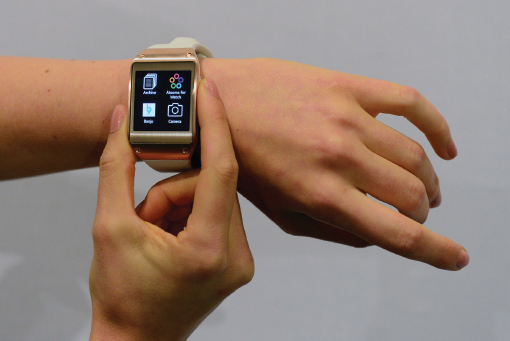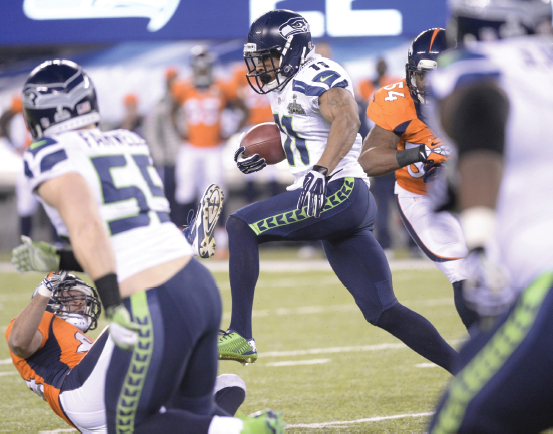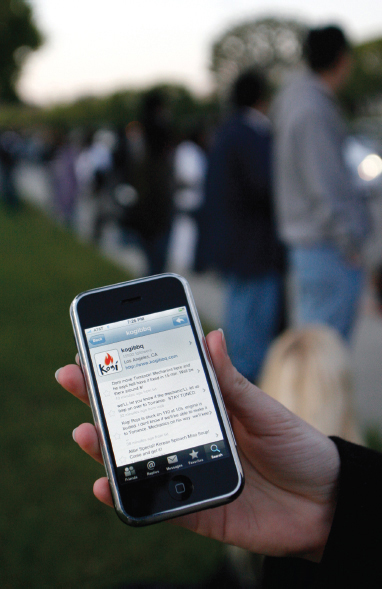Convergence and Mobile Media
The innovation of digital communication—
In recent years, the Internet has really become the hub for convergence, a place where music, television shows, radio stations, newspapers, magazines, books, games, and movies are created, distributed, and presented. Although convergence initially happened on desktop computers, the popularity of notebook computers and then the introduction of smartphones and tablets have hastened the pace of media convergence and made the idea of accessing any media content, anywhere, a reality.
Media Converges on Our PCs and TVs
First there was the telephone, invented in the 1870s. Then came radio in the 1920s, TV in the 1950s, and eventually the personal computer in the 1970s. Each device had its own unique and distinct function. Aside from a few exceptions, like the clock radio (a hybrid device popular since the 1950s), that was how electronic devices worked.
The rise of the personal computer industry in the mid-
By the early 2000s, computers connected to the Internet allowed an array of digital media to converge in one space and be easily shared. A user can now access television shows, movies, music, books, games, newspapers, magazines, and lots of other Web content on a computer. And with Skype, iChat, and other live voice and video software, PCs can replace landline telephones. Other devices, like iPods, quickly capitalized on the Internet’s ability to distribute such content and were adapted to play and exhibit multiple media content forms.
Media are also converging on our television sets, as the electronics industry manufactures Internet-
Mobile Devices Propel Convergence
Mobile telephones have been around for decades (like the giant “brick” mobile phones of the 1970s and 1980s), but the smartphones of the twenty-
In 2008, the first smartphone to run on Google’s competing Android platform was released. By 2014, Android phones (sold by companies such as Samsung, HTC, LG, and Motorola, and supported by the Google Play app market and the Amazon Appstore) held 52.1 percent of the smartphone market share in the United States, while Apple’s iPhone had a 41.3 percent share; Microsoft and BlackBerry smartphones constituted the remainder of the market.17 The precipitous drop of the BlackBerry’s market standing in just ten years (the company was late to add touchscreens and apps to its phones) illustrates the tumultuous competition in mobile devices. It also illustrates how apps and the ability to consume all types of media content on the go have surpassed voice call quality to become the most important feature to consumers purchasing a phone today.
In 2010, Apple introduced the iPad, a tablet computer suitable for reading magazines, newspapers, and books; watching video; and using visual applications. The tablets became Apple’s fastest-
The Impact of Media Convergence and Mobile Media

Convergence of media content and technology has forever changed our relationship with media. Today, media consumption is mobile and flexible; we don’t have to miss out on media content just because we weren’t home in time to catch a show, didn’t find the book at the bookstore, or forgot to buy the newspaper yesterday. Increasingly, we demand access to media when we want it, where we want it, and in multiple formats. In order to satisfy those demands and to stay relevant in such a converged world, traditional media companies have had to dramatically change their approach to media content and their business models.
Our Changing Relationship with the Media
The merging of all media onto one device, such as a tablet or smartphone, blurs the distinctions of what used to be separate media. For example, USA Today (a newspaper) and CBS News (network television news) used to deliver the news in completely different formats, but today their Web forms look quite similar, with listings of headlines, rankings of the most popular stories, local weather forecasts, photo galleries, and video. With the Amazon Kindle, on which one can read books, newspapers, and magazines, new forms like the Kindle Single challenge old categories. Are the fictional Kindle Singles novellas, or are they more like the stories found in literary magazines? And what about the investigative reports released as Kindle Singles? Should they be considered long-

Super Bowl XLVIII watchers generated a record 24.9 million tweets, with a peak of 381,605 tweets per minute, as viewers commented on Percy Harvin’s 87-
Not only are the formats morphing, but we can now also experience the media in more than one manner, simultaneously. Fans of television shows like The Voice, Glee, and Top Chef, or viewers of live events like NFL football, often multitask, reading live blogs during broadcasts or sharing their own commentary with friends on Facebook and Twitter. For those who miss the initial broadcasts, converged media offer a second life for media content through deep archive access and repurposed content on other platforms. For example, cable shows like Game of Thrones and Mad Men have found audiences beyond their initial broadcasts through their DVD collections and online video services like Amazon Instant Video and Apple’s iTunes. In fact, some fans even prefer to watch these more complex shows this way, enjoying the ability to rewind an episode in order to catch a missed detail, as well as the ability to binge-
Our Changing Relationship with the Internet
Mobile devices and social media have altered our relationship with the Internet. Two trends are noteworthy: (1) Apple now makes more than five times as much money selling iPhones, iPads, and iPods and accessories as it does selling computers, and (2) the number of Facebook users (1.23 billion in 2014) keeps increasing. The significance of these two trends is that through Apple devices and Facebook, we now inhabit a different kind of Internet—

In a world where the small screens of smartphones are becoming the preferred medium for linking to the Internet, we typically don’t get the full, open Internet, one represented by the vast searches brought to us by Google. Instead we get a more managed Internet, brought to us by apps or platforms that carry out specific functions via the Internet. Are you looking for a nearby restaurant? Don’t search on the Internet—
Facebook offers a similar walled garden experience. Facebook began as a highly managed environment, only allowing those with .edu e-
The open Internet—
The Changing Economics of Media and the Internet
The digital turn in the mass media has profoundly changed the economics of the Internet. Since the advent of Napster in 1999, which brought (illegal) file sharing to the music industry, each media industry has struggled to rethink how to distribute its content for the digital age. The content itself is still important—
Apple’s response to Napster established the new media economics. The late Apple CEO Steve Jobs struck a deal with the music industry. Apple would provide a new market for music on the iTunes store, selling digital music customers could play on their iPods (and later on their iPhones and iPads). In return, Apple got a 30 percent cut of the revenue for all music sales on iTunes, simply for being the “pipes” that delivered the music. As music stores went out of business all across America, Apple sold billions of songs and hundreds of millions of iPods, all without requiring a large chain of retail stores.
Amazon started as a more traditional online retailer, taking orders online and delivering merchandise from its warehouses. As books took the turn into the digital era, Amazon created its own device, the Kindle, and followed Apple’s model. Amazon started selling e-
The Next Era: The Semantic Web
Many Internet visionaries talk about the next generation of the Internet as the Semantic Web, a term that gained prominence after hypertext inventor Tim Berners-
The best example of the Semantic Web is Apple’s voice recognition assistant Siri, first shipped with its iPhone 4S in 2011. Siri uses conversational voice recognition to answer questions, find locations, and interact with various iPhone functionalities, such as the calendar, reminders, the weather app, the music player, the Web browser, and the maps function. Some of its searches get directed to Wolfram Alpha, a computational search engine that provides direct answers to questions, rather than the traditional list of links for search results. Other Siri searches draw on the databases of external services, such as Yelp for restaurant locations and reviews, and StubHub for ticket information. Another example of the Semantic Web is the Siemens refrigerator (available in Europe) that takes a photo of the interior every time the door closes. The owner may be away at the supermarket but can call up a photo of the interior to be reminded of what should be on the shopping list.22
